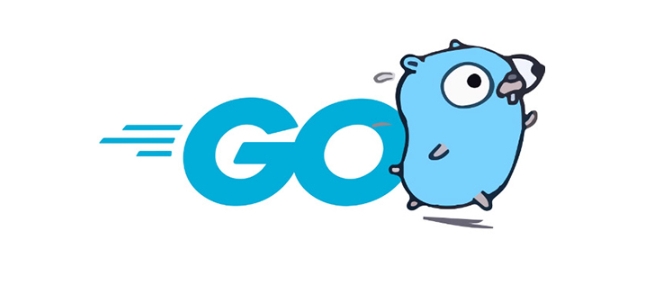The intrusion detection system (IDS) can be implemented through the Go language, and has the advantages of strong concurrent processing, high-performance network libraries and cross-platform compilation. 1. Select Go as the basic component: use goroutine to realize multi-threaded monitoring, pass the net packet capture and parse protocol, and improve efficiency with third-party libraries such as gopacket and ipmap; 2. Realize traffic monitoring and rule matching: use pcap packet capture, parse TCP/IP or HTTP protocol layer by layer, and combine YARA rules or regular expressions to identify abnormal behaviors, such as SYN flooding or SQL injection; 3. Improve detection accuracy: refine the rules and combine context judgment, set a whitelist to filter normal traffic, introduce behavioral analysis such as access frequency statistics, and reduce false positives through log classification and visualization tools. Go is suitable for building lightweight customized IDS, suitable as a practical project for cybersecurity learning.

The implementation of intrusion detection system (IDS) in Go is not as profound as many people imagine. If you are interested in network security or want to use Go to build a lightweight security tool, IDS is a good entry point. The advantage of Go is its strong concurrency processing capability and good performance, which is suitable for network traffic analysis and real-time detection.

The following is based on several common needs and talk about how to use Go to intrusion detection system.
How to choose Go language as the basic components of IDS?
Go is not a language designed specifically for security itself, but it has several features that are very suitable for IDS:

- Native support for concurrency : Go's goroutine makes multi-threading simple, suitable for listening to multiple ports at the same time or handling large numbers of connections.
- High-performance network library :
netpackages in the standard library are very powerful, and can directly capture packets and parse protocols. - Cross-platform compilation : You can write code once and run it on Linux, Windows, or even embedded devices.
In actual development, some third-party libraries can be used to simplify work, such as:
-
github.com/google/gopacket: used to capture packets and parse network data. -
github.com/oschwald/ipmap: used for IP address management. -
github.com/prometheus/client_golang: If you want to do monitoring metrics.
These libraries, combined with the performance advantages of Go itself, can allow you to quickly build a basic IDS framework.

How to achieve basic traffic monitoring and rule matching?
One of the core functions of IDS is to monitor network traffic and determine whether it is abnormal according to the rules. This process usually includes:
- Crawl network packets
- Resolve protocol layer (such as TCP/IP, HTTP, etc.)
- Determine whether it is suspicious according to the rules
Taking gopacket as an example, you can implement a simple listener like this:
handle, err := pcap.OpenLive("eth0", 65535, true, pcap.BlockForever)
if err != nil {
log.Fatal(err)
}
defer handle.Close()
packetSource := gopacket.NewPacketSource(handle, handle.LinkType())
for packet := range packetSource.Packets() {
// Process each package}Then you can add judgment logic to the loop, such as checking whether there is a SYN flood attack, whether there is a SQL injection feature string, etc.
In terms of rules, you can use YARA rules or custom regular expressions to match the content. This part is recommended to be made into configurable modules to facilitate subsequent expansion.
How to improve detection accuracy and reduce false alarms?
This is something that many newbies are likely to overlook. A freshly-built IDS may report hundreds of "attacks" every day, but most of them are false alarms. To solve this problem, you can start from the following directions:
- Refine the rules : Don’t just rely on keyword matching and make judgments based on context. For example, a certain SQL injection feature appears in the GET parameter, which is more suspicious than in the POST request.
- Introducing a whitelisting mechanism : Some normal traffic may trigger rules, such as automated test scripts. Whitelist these IPs or behaviors to avoid interference.
- Behavior analysis assistance : In addition to static rules, access frequency, user behavior patterns, etc. can also be recorded. For example, if an IP attempts to log in more than 100 times in one minute, it may be a brute-force cracking.
- Log classification and visualization : Call the alarm information to the log system, and use ELK or Prometheus Grafana to view trends, making it easier to find real threats.
These optimizations may not be all added from the beginning, but at least there must be a preliminary mechanism, otherwise your IDS will easily become a "noise manufacturer".
Basically that's it. Go is not complicated to do IDS, but don’t expect to replace mature systems like Snort or Suricata as soon as it comes out. It is more suitable for doing some lightweight customized detection tasks, or as a practical project to learn cyber attack and defense. As long as you understand the packet processing process and rule matching mechanism, the rest is to slowly polish the details.
The above is the detailed content of Go Intrusion Detection Systems. For more information, please follow other related articles on the PHP Chinese website!

Hot AI Tools

Undress AI Tool
Undress images for free

Undresser.AI Undress
AI-powered app for creating realistic nude photos

AI Clothes Remover
Online AI tool for removing clothes from photos.

Clothoff.io
AI clothes remover

Video Face Swap
Swap faces in any video effortlessly with our completely free AI face swap tool!

Hot Article

Hot Tools

Notepad++7.3.1
Easy-to-use and free code editor

SublimeText3 Chinese version
Chinese version, very easy to use

Zend Studio 13.0.1
Powerful PHP integrated development environment

Dreamweaver CS6
Visual web development tools

SublimeText3 Mac version
God-level code editing software (SublimeText3)
 Is golang frontend or backend
Jul 08, 2025 am 01:44 AM
Is golang frontend or backend
Jul 08, 2025 am 01:44 AM
Golang is mainly used for back-end development, but it can also play an indirect role in the front-end field. Its design goals focus on high-performance, concurrent processing and system-level programming, and are suitable for building back-end applications such as API servers, microservices, distributed systems, database operations and CLI tools. Although Golang is not the mainstream language for web front-end, it can be compiled into JavaScript through GopherJS, run on WebAssembly through TinyGo, or generate HTML pages with a template engine to participate in front-end development. However, modern front-end development still needs to rely on JavaScript/TypeScript and its ecosystem. Therefore, Golang is more suitable for the technology stack selection with high-performance backend as the core.
 How to build a GraphQL API in golang
Jul 08, 2025 am 01:03 AM
How to build a GraphQL API in golang
Jul 08, 2025 am 01:03 AM
To build a GraphQLAPI in Go, it is recommended to use the gqlgen library to improve development efficiency. 1. First select the appropriate library, such as gqlgen, which supports automatic code generation based on schema; 2. Then define GraphQLschema, describe the API structure and query portal, such as defining Post types and query methods; 3. Then initialize the project and generate basic code to implement business logic in resolver; 4. Finally, connect GraphQLhandler to HTTPserver and test the API through the built-in Playground. Notes include field naming specifications, error handling, performance optimization and security settings to ensure project maintenance
 How to install Go
Jul 09, 2025 am 02:37 AM
How to install Go
Jul 09, 2025 am 02:37 AM
The key to installing Go is to select the correct version, configure environment variables, and verify the installation. 1. Go to the official website to download the installation package of the corresponding system. Windows uses .msi files, macOS uses .pkg files, Linux uses .tar.gz files and unzip them to /usr/local directory; 2. Configure environment variables, edit ~/.bashrc or ~/.zshrc in Linux/macOS to add PATH and GOPATH, and Windows set PATH to Go in the system properties; 3. Use the government command to verify the installation, and run the test program hello.go to confirm that the compilation and execution are normal. PATH settings and loops throughout the process
 Go sync.WaitGroup example
Jul 09, 2025 am 01:48 AM
Go sync.WaitGroup example
Jul 09, 2025 am 01:48 AM
sync.WaitGroup is used to wait for a group of goroutines to complete the task. Its core is to work together through three methods: Add, Done, and Wait. 1.Add(n) Set the number of goroutines to wait; 2.Done() is called at the end of each goroutine, and the count is reduced by one; 3.Wait() blocks the main coroutine until all tasks are completed. When using it, please note: Add should be called outside the goroutine, avoid duplicate Wait, and be sure to ensure that Don is called. It is recommended to use it with defer. It is common in concurrent crawling of web pages, batch data processing and other scenarios, and can effectively control the concurrency process.
 Go embed package tutorial
Jul 09, 2025 am 02:46 AM
Go embed package tutorial
Jul 09, 2025 am 02:46 AM
Using Go's embed package can easily embed static resources into binary, suitable for web services to package HTML, CSS, pictures and other files. 1. Declare the embedded resource to add //go:embed comment before the variable, such as embedding a single file hello.txt; 2. It can be embedded in the entire directory such as static/*, and realize multi-file packaging through embed.FS; 3. It is recommended to switch the disk loading mode through buildtag or environment variables to improve efficiency; 4. Pay attention to path accuracy, file size limitations and read-only characteristics of embedded resources. Rational use of embed can simplify deployment and optimize project structure.
 Go for Audio/Video Processing
Jul 20, 2025 am 04:14 AM
Go for Audio/Video Processing
Jul 20, 2025 am 04:14 AM
The core of audio and video processing lies in understanding the basic process and optimization methods. 1. The basic process includes acquisition, encoding, transmission, decoding and playback, and each link has technical difficulties; 2. Common problems such as audio and video aberration, lag delay, sound noise, blurred picture, etc. can be solved through synchronous adjustment, coding optimization, noise reduction module, parameter adjustment, etc.; 3. It is recommended to use FFmpeg, OpenCV, WebRTC, GStreamer and other tools to achieve functions; 4. In terms of performance management, we should pay attention to hardware acceleration, reasonable setting of resolution frame rates, control concurrency and memory leakage problems. Mastering these key points will help improve development efficiency and user experience.
 How to build a web server in Go
Jul 15, 2025 am 03:05 AM
How to build a web server in Go
Jul 15, 2025 am 03:05 AM
It is not difficult to build a web server written in Go. The core lies in using the net/http package to implement basic services. 1. Use net/http to start the simplest server: register processing functions and listen to ports through a few lines of code; 2. Routing management: Use ServeMux to organize multiple interface paths for easy structured management; 3. Common practices: group routing by functional modules, and use third-party libraries to support complex matching; 4. Static file service: provide HTML, CSS and JS files through http.FileServer; 5. Performance and security: enable HTTPS, limit the size of the request body, and set timeout to improve security and performance. After mastering these key points, it will be easier to expand functionality.
 Go select with default case
Jul 14, 2025 am 02:54 AM
Go select with default case
Jul 14, 2025 am 02:54 AM
The purpose of select plus default is to allow select to perform default behavior when no other branches are ready to avoid program blocking. 1. When receiving data from the channel without blocking, if the channel is empty, it will directly enter the default branch; 2. In combination with time. After or ticker, try to send data regularly. If the channel is full, it will not block and skip; 3. Prevent deadlocks, avoid program stuck when uncertain whether the channel is closed; when using it, please note that the default branch will be executed immediately and cannot be abused, and default and case are mutually exclusive and will not be executed at the same time.






